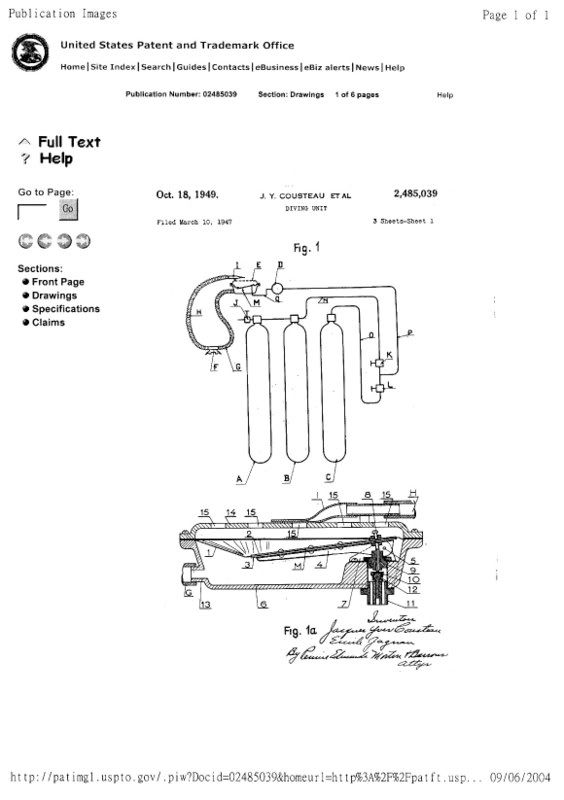...Referring to Figs. 1, 2 and 3, A and B are two cylinders containing compressed breathing gas. On the cylinder A is mounted a cock J through which the compressed air is admitted to the two cylinders for the purpose of filling them. The air inhaled by the diver is withdrawn from the cylinders through a common pipe N. A third cylinder C serves as a reserve; the gas contained in it being available for the diver when he feels that the supply of gas contained in the two cylinders A and B is close to being exhausted. The capacity of this third cylinder is sufficiently large to supply sufficient air to the diver to enable him to rise to the surface sufficiently slowly. The diver can thus dispense with any instruments for measuring the pressure in the two cylinders A and B. The air is withdrawn from the reserve cylinder C through a pipe O. Pipes N and O are provided with cocks K and L, respectively, which are operated by the diver. While two cylinders A and B have been shown for the normal supply of air to the diver, only one could be utilized instead...
...For the operation of the unit the three cylinders A, B and C are first filled with compressed air, the cocks K and L being closed. Before sinking, the diver, who wears about him all the apparatus, opens cock K, cock L remaining shut. Under tthe inspirations of the diver, the valve member 10 of the low pressure regulator E opens by an amount just necessary for the breathing. When the diver feels that his normal supply of air is on the point of being exhausted, he opens the cock L and slowly rises to the surface. (emphasis added]





